|
Area
|
Metric details
|
|
Overarching approach
|
- Embedding actions to address inequality – of both access to services and health outcomes – within trust-wide processes and strategy has been identified by several trusts as a key enabler for broader, trust wide traction.
- Having an executive champion and health inequalities as part of an executive level portfolio, as now detailed in the COVID-19 phase 3 implementation guidance can also help to consolidate and marshal trust-wide action.
|
|
Baseline: establishing impact from any delays to care
|
- Examine the trust risk stratified cohorts and profile them to help quantify any delays to care that have been introduced, and the impact on disease progression as a result of COVID-19 response.
- Draw on local system Joint Strategic Needs Assessment data and reports and Population Health Management and inequalities dashboards and linked datasets can help during this stage to provide granularity on location of these local needs.
- This process can help when evaluating the backlog of care to be addressed and help ensure that prioritisation is appropriate and will not risk the widening of existing inequalities when services resume.
|
|
Clinical risk indicators or other known trust socio-economic patient data
|
CASE STUDY
Equity reviews using routine data
Barts Health NHS Trust has undertaken a series of equity reviews using existing patient data which has included analysis of 28-day re-admissions by protected characteristics. Further detail on aspects of this work can be found in section ‘step one: identifying target population groups’.
As part of recovery planning, providers should be looking at their service activity by demography and deprivation. The indicators below may help during this work, to aid profiling of the local populations. Providers will also need to profile their patient/client populations and relate this to the wider local population – this stage can often be missing or may be conducted in isolation of each other. Understanding both the patient population and the local population are key to addressing unintended inequalities.
Customised profiles – using indicators such as those within PHE Fingertips tools – can help build insights on the local population, particularly for factors relevant for coronavirus high risk groups and the local socio-economic context:
|
|
Wider determinants metrics via integrated care partnership
|
- These wider determinants indicators are increasingly available to trusts via pooled or linked system datasets, through local integrated care partnership or other cross-partner forums.
- Data sources could include local authority collections e.g. education, economic markers, air quality, transport, wellbeing, housing and homelessness.
|
|
Social and personal care
|
- Safeguarding (adults and children) trends.
- Domestic violence activity.
|
|
Measure trends in service usage
|
- Analyse by deprivation quintile, age, gender, by BAME status and other protected characteristics, as well as physical or sensory disability.
|
|
Prevention services
|
- Smoking cessation referrals and completed quit attempts (including patients with severe mental health illness and pregnant women and their partners).
- Referral, uptake and outcomes from exercise, dietetics and weight management services.
- Alcohol and substance misuse brief interventions conducted and referral and outcomes to support services.
- Gambling support referral and uptake.
- Screening programmes referral and uptake/outcomes.
|
|
Primary and community care
|
- Consultation rates.
- Remote consultation rates (particularly changes in access from historical consultation rates, exploring both the distribution and nature of access. Are certain groups experiencing better access? Are other groups impacted by reduced access? Are there economic and/or physical barriers to not attending services).
- Immunisation and screening (national programmes) uptake.
- Routine long-term condition management activity for example, the percentage of patients with COPD who have had a review, undertaken by a healthcare professional, including an assessment of breathlessness using the Medical Research Council dyspnoea scale in the preceding 12 months or the percentage of patients with coronary heart disease who have had influenza immunisation in the preceding 1 August to 31 March.
- Delayed presentation for maternity care, late uptake of 12-week booking appointment.
|
|
Secondary care
|
- Remote consultation rates and any changes in access based on comparison with historical consultation rates such as for cardiac care, ophthalmology services.
- DNA rates for services that have been maintained.
- Referral rates for 2-week wait cancer diagnosis.
- Cancer staging at first diagnosis.
- A&E activity.
- Admission rates for heart attacks and strokes, time from symptom onset to first clinical presentation; and outcomes.
|
|
Workforce
|
Capturing data on workforce (all groups) is crucial especially since health settings and occupational exposure are a key factor in transmission.
It is suggested that NHS provider trusts:
- report on overall findings of workforce risk assessment by demographic characteristics and staff groupings*
- report on workforce COVID-19 test results, with point prevalence at given time intervals by demographic characteristics and staff groupings.*
* Reporting should be anonymised, taking account of small numbers in usual way.
|
|
Mental Health
|
- Deliberate self-harm and suicide profile trends.
- Mental health crisis activity, including presentations at A&E.
- IAPT activity (incl. treatment completions, outcomes and PROMs).
|
